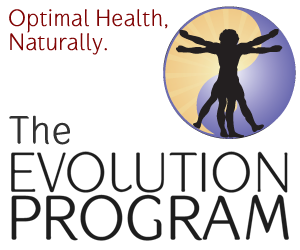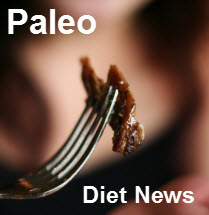Paleo Diet News Review: Waist Disposal
Dubbed as a “no-nonsense, science-based approach to fat-loss“, this book by Dr. John Briffa - a practising UK-based doctor and health journalist - serves as a great introduction to the paleo diet and lifestyle for those whose main goal is fat-loss. However, it’s substantial enough (mainly due to its plethora of excellent scientific and medical references) to be of interest to long-time paleo enthusiasts.
The book’s key feature is that all of its pieces of advice - whether they be about the foods to eat, or the exercises to do in order to most effectively lose weight - are based on a thorough review and analysis of the available scientific data. There’s no wishful thinking here, nor any allegiance to fad diets which are based on perceived morality rather than actual human physiology. The book is squarely aimed at the male demographic, but - of course - the information contained within it applies to both genders.
Briffa begins by examining why an expanding waistline can be bad news, and goes on to thoroughly debunk the traditional notion of calorie-counting as a way of dropping fat. He’s also very clear about what he sees as the root cause of obesity - the excessive consumption of carbohydrates, particularly the refined variety - and about the fact that eating fat isn’t fattening in itself. As you might expect, he covers - in detail, and with the science to back up his assertions - why a diet of whole, real, paleo foods is what the human body needs to function properly and shrink down to its optimal weight.
None of this will be news to most readers of this blog, but what’s particularly pleasing about the book is that because it doesn’t make heavy weather of its paleo-centric approach to nutrition, it’s quite likely to turn a number of people on to the paleo diet. It outlines a diet plan that is close to perfectly paleo. In particular, Briffa exhorts his readers to focus on nutrient-dense foods, and points out that - when it comes to carbohydrates - green leafy vegetables are always going to be more nutrient-dense than grains (to be avoided) and fruits (to be eaten in moderation). Needless to say, he recognises good quality animal foods as the most nutrient-dense of all.
Dr. John Briffa. Photo courtesy of drbriffa.com
Perhaps the book’s most original gem is in its approach to the exercise element of “waist disposal”. Because it’s a beginner’s approach to fat loss, you won’t find a single mention of Crossfit here. Instead, Briffa suggests a generally more active lifestyle - walking most days - supplemented with appropriate strength training. For those who are very nervous of approaching a workout regime - or who are just very short of time - he has invented something he calls The 12-Minute Workout. I’m going to share it here, because, of all the tidbits in the book, it’s the one that I find myself using on a regular basis, on those days when I’m tempted to duck out of my scheduled exercise session!
Dr. John Briffa’s 12-Minute Workout
In Dr Briffa’s own words:
It is possible to improve the look and condition of the body significantly, quite quickly and easily and with relatively low time-investment, too. What we have here is a 12-minute daily programme that is mainly resistance-exercise based, but includes some aerobic exercise, too. It can be performed in a space no bigger than a beach towel and requires little or no special equipment. If you do nothing other than this 12-minute routine each day, you will still be able to improve your strength and physique to a significant and tangible extent.
The workout itself is very simple. In the first six minutes, using dumbbells or a resistance band, you spend a minute each doing an appropriate strength-training exercise of your choice, for each of the following body parts: chest; back; shoulders; biceps; triceps; and abdominals. Of course, the first time out, it’s unlikely that six minutes will be quite enough time to cover all six body parts, but this routine becomes more fluid once you get used to it.
The second six minutes involves a combination of jogging on the spot and squatting, alternating between the two so that a gentle aerobic “sprint” effect is achieved. The routine isn’t long enough to create the kind of stress that prolonged cardio can result in, and whilst it isn’t quite at the level of a HIIT (High Intensity Interval Training) workout, it’s going to have an overall conditioning effect, and it’ll cerainly tone those lower-body muscles. Best of all, it’s quite likely to encourage habitual non-exercisers to make some time in their routines for some daily therapeutic movement.
Overall, I commend this book to anyone who’s interested in improving their health, fitness, and eating habits. Do you know someone who could do with a bit of a leg-up in terms of fat loss, but who doesn’t seem interested in your so-called “fad” diet? If so, this book could be a great method of turning them on to the paleo diet, without bashing them over the head with your paleo enthusiasm. Well worth a look.
To get a flavour of Dr. John Briffa’s science-based approach to health and fitness, check out his excellent blog, here.
If you found this article useful, please click the ‘LIKE’ button below to share on Facebook. We also invite you to leave comments, and join the Paleo Diet News discussion!
Brian Cormack Carr is a professional life and career coach, writer, and advocate of a real foods diet.
His home on the web is www.cormackcarr.com where you will find more articles, a free newsletter, and information about his online career-creation programme www.vitalvocation.com. You can follow Brian on Twitter: @cormackcarr






Pingback: Waist news | Bestbingositesonline
Pingback: Paleo Diet News Review: Escape The Diet Trap » Your source for Paleo Diet information
Pingback: Paleo Diet: Are You A Hunter Or A Gatherer?